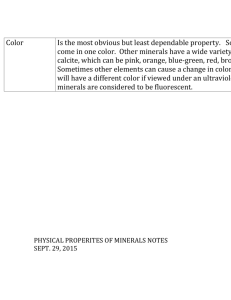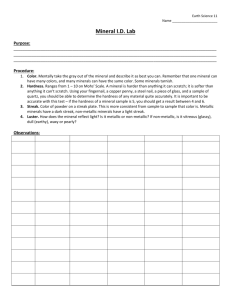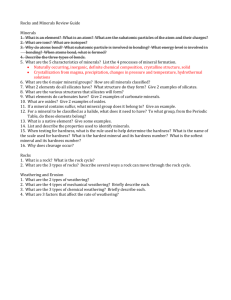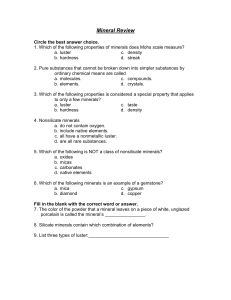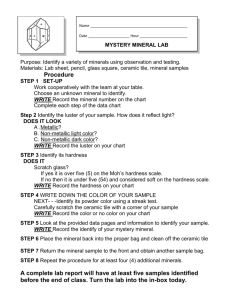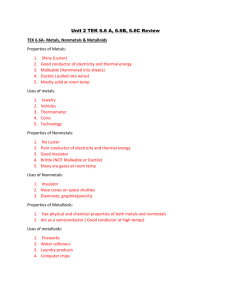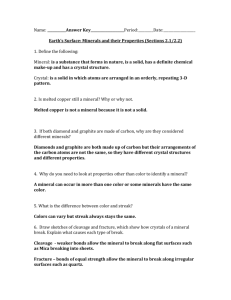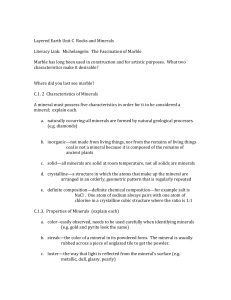Minerals Powerpoint - Troup 6
advertisement
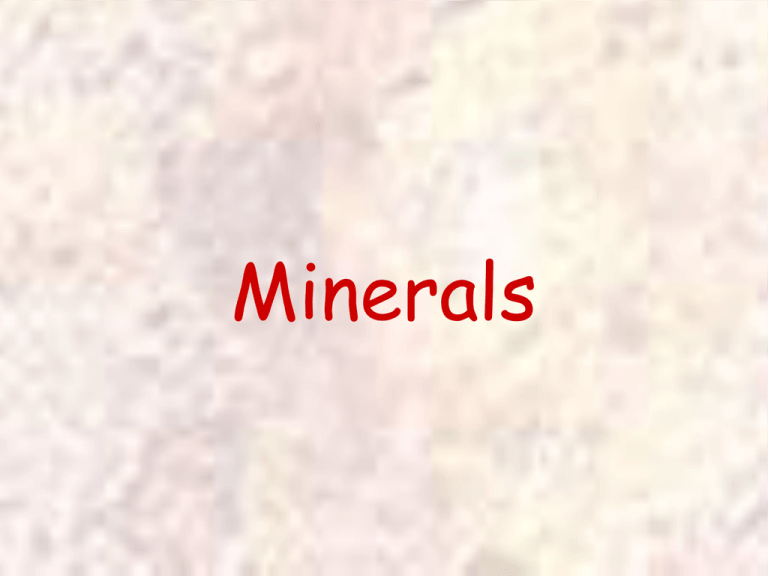
Minerals What is the difference in picture A and B? (Other than the obvious) A B What is a mineral? • Formed by natural processes such as cooling magma and evaporating saltwater • Inorganic – not made by life processes • Element or a compound with definite chemical composition (structure) • Solid and crystalline (atoms in patterns that repeat over and over again) S.N.I.F.E. Solid-not liquid, gas, or plasma Naturally Occurring-Not manmade Inorganic–Not alive, never was Fixed Composition - Same recipe everywhere, every time Element or Compound-Not a mixture How are minerals classified? Minerals are grouped based on crystal systems. This means that they are classified according to their type of repeated crystal patterns. How are minerals identified? (How can you tell them apart?) • Hardness • Luster • Specific Gravity • Streak • Breakage • Unique properties Hardness Hardness is determined by how easily a mineral can be scratched. Mohs Scale of Hardness is used to measure the hardness of a mineral Mohs Scale Hardness Hardness of Common Objects Talc (softest) 1 Fingernail 2.5 Gypsum Calcite Fluorite 2 3 4 Piece of copper 2.5-3.0 Iron nail 4.5 Glass 5.5 Apatite Feldspar Quartz Topaz Corundum Diamond (hardest) 5 6 7 8 9 10 Steel file 6.5 Streak plate 7.0 Flint sandpaper Spinel (rock shops) Emery sandpaper Carborundum sandpaper Luster The way a mineral reflects light. Metallic or Nonmetallic Specific Gravity The weight of the mineral in comparison to the weight of an equal volume of water Streak The color of a mineral when it is in powdered form. Tested by streaking the mineral across another object (object must be harder than the mineral) Breakage Clevage-breaks along smooth, flat surfaces Fracture-breaks with an uneven, rough, or jagged surface Unique Properties Many minerals have unique characteristics that can also be used to identify the mineral. Example-natural magnet, double refraction, odor, taste, reaction to acids, fluorescence, etc. Uses of Minerals • Minerals are a component of everyday life because they are a part of everyday objects • Jewerly (gems-rare minerals) • Diamonds are used in industrial abrasives and cutting tools • Some minerals are used to produce specific types of laser light • Quartz is used in electronics • Minerals that contain useful substances can be mined (Ex. Bauxite-aluminum; Ilemenite and Rutile-titanium)

